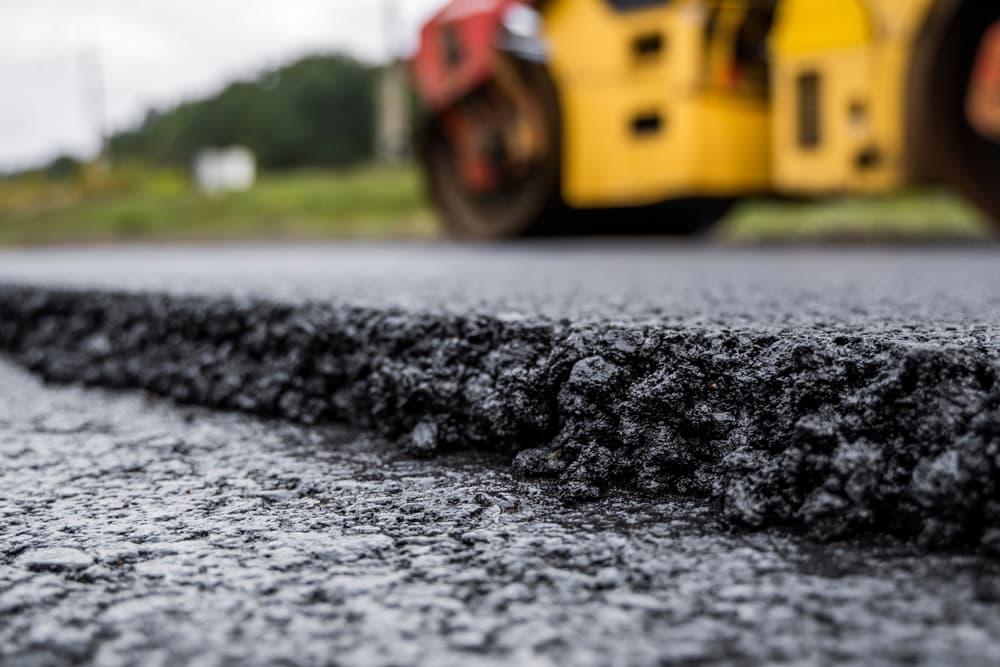What Does A1 Professional Asphalt & Sealing Llc Do?
What Does A1 Professional Asphalt & Sealing Llc Do?
Blog Article
Getting My A1 Professional Asphalt & Sealing Llc To Work
Table of ContentsThe 5-Minute Rule for A1 Professional Asphalt & Sealing LlcAbout A1 Professional Asphalt & Sealing LlcHow A1 Professional Asphalt & Sealing Llc can Save You Time, Stress, and Money.Some Ideas on A1 Professional Asphalt & Sealing Llc You Should KnowWhat Does A1 Professional Asphalt & Sealing Llc Mean?

The oil in an auto engine is not just oil. It includes a selection of additives to enhance the lorry's efficiency. These consist of polymers, thickness modifiers, heat stabilizers, additional lubes, and use ingredients. The REOB has all the additives that were in the waste oil as well as the wear metals from the engine (mostly iron and copper).
By making numerous blends using different REOB examples and various asphalt binders, the variants mainly can be averaged out. Numerous States supplied samples of known REOB make-up to TFHRC scientists, that examined the samples to contrast the percent of included (recognized) REOB to the discovered (checked) quantity. The analyses revealed a similar percent of included and discovered REOB.
How A1 Professional Asphalt & Sealing Llc can Save You Time, Stress, and Money.
None of those States understood that the asphalt they were acquiring included REOB. One State insisted its examples had no REOB - https://canvas.instructure.com/eportfolios/2864493/Home/A1_Professional_Asphalt_Repairs_Paving_Excellence_in_St_Louis.
Of the 1,532 samples examined, 12 percent included REOB, and some included considerably high levels of it at 1020 percent. The highest degree was 34 percent in a sample from Texas, which TxDOT had used in a patching compound. This testing also revealed the existence of phosphoric acid in 11 percent of the samples, and 2 percent had ground tire rubber.
Two years back at TRB's yearly meeting, the Federal scientists held an REOB workshop and presented the searchings for of their laboratory examinations to a standing room-only crowd. Although some companies do not especially ban REOB, they do enforce physical examinations that avert its useeffectively a ban. a1 professional. Others do not prohibit it by requirements, but have agreements with asphalt providers to stay clear of using REOB
Top Guidelines Of A1 Professional Asphalt & Sealing Llc
Ohio and Texas restriction degrees to less than 5 percent of the asphalt. To develop a trustworthy test approach that all States can use, the TFHRC scientists set up a round-robin examination strategy.
In total, the researchers prepared and shipped 720 blends. The participants are evaluating the samples separately making use of the guidelines supplied by the TFHRC researchers. The round-robin testing is nearly completed, and TFHRC remains in the procedure of gathering the results. The output will certainly be a recommended AASHTO examination technique that any kind of State can take on and make use of (asphalt paving repairs).
The pavement with REOB, which is situated 0.6 mile (1 kilometer) from the sidewalk without REOB, has similar subgrade, web traffic density, and environment. The sector of Highway655 with 5 to 10 percent REOB showed substantial breaking. In this instance, the presence of REOB was the determined reason for splitting at a low temperature levels.
"In our experience in copyright, even tiny amounts of 23 percent can be an issue." Similarly, an area of examination pavement in Minnesota (MN1-4) discovered to have REOB likewise fractured prematurely. The pavement executed well for the first 3 to 4 years, however then began to fracture. This pavement is also based on reduced temperatures.
Examine This Report about A1 Professional Asphalt & Sealing Llc
The tests were not extensive, but they showed that at levels of 6 percent or even more, the tensile read this post here stamina of the asphalt went down dramatically. At a level of 3.5 percent REOB, the variation in the physical test techniques was more than the impact of REOB. As a matter of fact, it was tough for scientists to examine whether REOB existed.

One binder specification considered is the distinction in between the reduced temperature important spec temperature for stiffness (S) in the bending light beam rheometer and the flexing beam rheometer creep incline (m-value) kept in mind as Tcritical. TC = TC (S) TC (m-value). Examination of this specification is still recurring. 2 independent research study groups, one from AASHTO and the various other from the Asphalt Institute, wrapped up that more study is required on the use of REOB in asphalt.
Previously, all asphalt testing measured engineering residential or commercial properties such as rigidity. These tests do disappoint what materials had actually been added to the asphalt. One sample obtained during the TFHRC study had a really weird analysis. The example had the complying with examination results: Superpave PG 64-28 with a high temperature level grade of 67.3 Tcritical on the bending beam rheometer was 6.7 degrees Celsius.

The Best Guide To A1 Professional Asphalt & Sealing Llc
These results demonstrate there are weaknesses in the standard engineering testing protocols that might be exploited. The producer might have an economic benefit and the product passes all the standardized examinations, however the product might not be helpful to making sure long-lasting performance. To resolve this concern and the growth of new asphalt ingredients and extenders, TFHRC is beginning a research program to utilize handheld spectroscopic devices, x-ray fluorescence spectroscopy, and Fourier change infrared spectroscopy to make it possible for evaluations to be performed in the area instead of having to take examples back to the lab.
Report this page